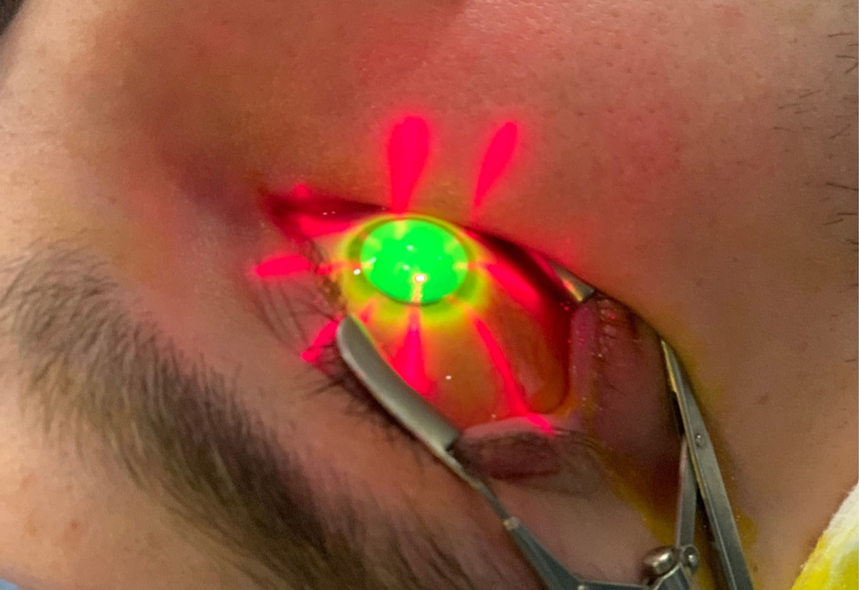 |
| This study observed no complications or safety concerns in patients who received continuous or pulsed accelerated corneal crosslinking. Photo: Lily Arendt, OD. Click image to enlarge. |
Though it’s not yet approved for use in the United States, accelerated corneal crosslinking (ACXL)—both continuous and pulsed—is an effective treatment option for progressive keratoconus that offers a quicker procedure time. These findings, according to the study author, support this approach as an alternative for the conventional Dresden protocol.
This prospective multicenter clinical trial included patients with progressive keratoconus who underwent ACXL, either continuous or pulsed. Researchers collected best-corrected visual acuity, sphere, cylinder, spherical equivalent and topographical keratometry data preoperatively and at one, three, six, 12, 18 and 24 months postoperatively.
The study included 96 eyes of 78 patients. Among study participants, the mean age was 20.8±4.4 years for continuous ACXL and 26.7±7.7 years for pulsed ACXL. All patients underwent only one CXL treatment per eye and procedures were performed using the standard epithelium-off technique.
The mean best-corrected visual acuity was 0.4±0.4 for continuous ACXL and 0.01±0.1 for pulsed ACXL preoperatively. At the time of last follow-up best-corrected visual acuity was 0.3±0.3 and -0.01±0.1 for continuous and pulsed ACXL, respectively.
Study authors reported that the subjective sphere and spherical equivalent did not show any statistically significant differences between the time points. However, they found that the subjective cylinder showed significant differences between continuous and pulsed ACXL. Data showed that keratometric values—Ksteep, Kflat and SimK—remained stable.
In terms of safety, the research team observed no major complications in either patient group. Central corneal infiltrate developed in one eye within the first five days of the procedure; however, it resolved completely with antibiotic therapy. No residual scarring or any long-term visual involvement occurred.
“Our study demonstrates that both continuous-ACXL and pulsed-ACXL are equally safe and effective CXL treatment protocols for stabilizing keratoconus progression,” the study authors noted in their recent paper for Eye & Contact Lens. “Therefore, they can be considered alternatives to the conventional Dresden protocol. However, further clinical trials on long-term efficacy and safety with more patients are required in the future.”
Salvador-Culla B, Afsara A, Roper N, et al. Accelerated Corneal Crosslinking to Arrest Progression of Corneal Ectasia: A Prospective Multicenter Study. Eye Contact Lens. February 7, 2024 [Epub ahead of print]. |

